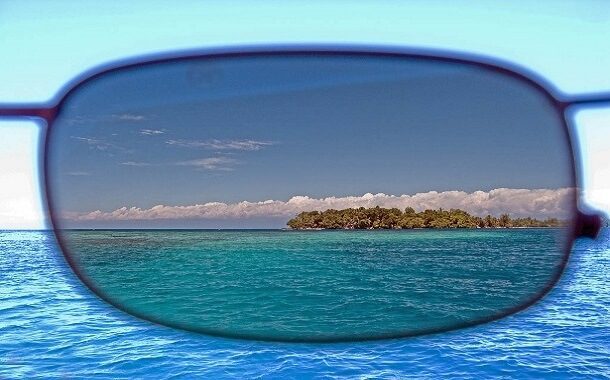How Much do Polarized Sunglasses Cost?
Last Updated on February 1, 2024
Written by CPA Alec Pow | Content Reviewed by ![]() CFA Alexander Popinker
CFA Alexander Popinker
Sunglasses are one of the most popular fashion accessories around. But polarized sunglasses offer more than just style – they provide crucial eye protection and visual clarity. If you’re in the market for a new pair of shades, you’re probably wondering – how much do polarized sunglasses cost?
How Much do Polarized Sunglasses Cost?
The prices for polarized sunglasses can vary quite a bit based on the brand, features, and materials. But generally, you can expect to pay anywhere from $50 to $300 for a decent pair of polarized sunglasses. High-end designer polarized shades can even cost upwards of $500.
At ReplaceALens.com, Single Vision Plastic Polarized Lenses cost $89.00 per pair, Single Vision Polycarbonate Polarized Lenses cost $119.00 per pair, and Single Vision Trivex Polarized Lenses are priced at $159.00 per pair.
Shark Eyes lists the following prices:
- Men’s Polarized Mirror Lens Sunglasses: $2.58 – $31.00 per unit
- Women’s Square Polarized Fashion Sunglasses: $2.50 – $30.00 per unit
At Hobie Eyewear, prices range from $79.99 to $99.99 for various models.
TripSavvy mentions that the price of polarized sunglasses can vary from about $25 to $350.
Of course, as with most products, you get what you pay for when it comes to sunglasses. Let’s take a closer look at what makes polarized lenses special, what impacts the prices, and how to shop for the right shades without breaking the bank.
What are Polarized Sunglasses?
Polarized sunglasses have lenses that help reduce intense reflected glare. They use a special chemical filtering applied to the lenses that blocks horizontally oriented light waves.
This light filtering technology offers several advantages:
- Reduces eye strain – Glare can cause squinting and discomfort. Polarized lenses relax your eyes by cutting glare.
- Enhances visual clarity – By eliminating reflected light, you can see more clearly, especially on water or snow. Objects appear sharper and colors are truer.
- Improves safety – Reducing glare helps you see more easily in bright light. This improved visibility is great for driving, boating, fishing, and sports.
So if you want more than just stylish shades, polarized lenses are the way to go. But what determines the pricing for these special sunglasses?
Factors Affecting the Cost of Polarized Sunglasses
There are several factors that affect the retail price of polarized sunglasses:
- Brand name – Designer brands like Ray-Ban, Oakley, or Maui Jim will be pricier than generic or non-brand name shades. You’re paying for the brand cachet.
- Lens material – Higher quality polycarbonate polarized lenses are more expensive than low-grade plastic versions. But they offer better clarity and durability.
- Lens technology – Advanced polarization filtering methods and specialty lens treatments (like anti-reflective coating) add to the cost. But they also enhance performance.
- Frame material – Polarized sunglasses with frames made of premium metals or durable acetate are pricier than plastic frame shades. Quality frames won’t bend or break easily.
- Extra features – Add-ons like mirrored coatings, interchangeable lenses, or protective cases will drive up the price. Consider if you really need the extras or if they’re worth paying more.
- Retailer reputation – Sunglasses from well-known major retailers generally cost more than no-name discount shops. Known retailers have higher overhead costs factored into the pricing.
So when looking at polarized sunglasses options, you’ll want to evaluate the mix of brand name, lens and frame materials, features, and seller reputation that impact the retail price tag. Finding the sweet spot that fits both your needs and budget takes a little shopping savvy.
How to Choose the Right Polarized Sunglasses
With such a wide range of pricing for polarized sunglasses, it can be tricky to find the right pair. Follow these tips to select shades that are worth the cost:
- Assess your needs – Consider when and how you’ll use the sunglasses. Frequent drivers may want to invest more in top glare protection. Weekend boaters can look for budget-friendly fishing shades.
- Check lens quality – Look beyond polarization to lenses with 100% UV protection, impact/scratch resistance, and anti-reflective treatments for the clearest, safest vision.
- Try on frames – Make sure the size, shape, and fit complement your face and feel comfortable. Pricier frames often equate to better quality.
- Compare prices – Research options and prices from various retailers, both local shops and online sellers. Be wary of prices that seem too good to be true.
- Look for sales – Time your purchase to seasonal sales, especially in spring and fall. You can score substantial discounts on last year’s polarized styles.
- Consider multi-packs – For families or those prone to losing sunglasses, multi-packs with 2-3 pairs can maximize value. Just ensure the quality is still decent.
Taking the time to identify the most important features and shop around for sales and bundles can help you find a high-quality pair of polarized sunglasses that fit both your eyewear needs and budget.
You might also like our articles about the cost of progressive lenses, transition lenses, or hybrid contact lenses.
How Do Polarized Sunglasses Compare to Non-Polarized?
Polarized lenses tend to cost more than regular sunglasses because of the specialized technology they use to filter glare. But are they worth the extra expense?
The pros of polarized sunglasses include:
- Better reduction of eye-straining and potentially dangerous glare
- Increased visual clarity and color contrast
- Often made with higher quality lens materials
- Provide optimal sun protection for activities like fishing, boating, driving, and sports
The pros of non-polarized sunglasses:
- Typically more affordable, with prices ranging from $15 to $75
- Offer UV protection for casual everyday use
- Come in a very wide range of styles and designs
- Less expensive to replace if frequently lost or damaged
So you can see that polarized lenses offer more technically advanced visual perks. But cheaper non-polarized shades may be perfectly suitable for basic sunglass needs. Assess whether the improved glare reduction is worth the cost when choosing between the two options.
Popular Brands and Prices for Polarized Sunglasses
Once you decide to get polarized shades, which brand should you buy? Here’s a look at some of the top polarized sunglass brands across the price spectrum:
- Affordable brands like Torege ($45-$75): Offer solid quality polarized lenses and stylish designs at budget-friendly price points. Great for cost-conscious buyers.
- Outdoor brands like Maui Jim ($200-$350): Specialize in polarization technology for fishing, hiking, and watersports. Invest in excellent glare protection.
- Designer brands like Ray-Ban ($150-$350): Iconic name brands focused on fashion-forward styling but with quality polarized lenses. Paying for brand prestige.
- Sport brands like Oakley ($90-$200): Engineer advanced polarization lenses ideal for athletic performance and protection. Pay more for specialized sport features.
- Luxury brands like Persol ($300-$500): Sophisticated polarized shades focused on premium materials and craftsmanship. Highest prices for brand exclusivity.
Within each brand, prices also vary based on the frame style, lens options, and particular model. Doing some comparison shopping lets you find the right mix of polarization quality, features, and appealing style at a cost you’re comfortable with.
Where to Buy Polarized Sunglasses
Armed with the background on polarization advantages and pricing, where should you look to buy your shades? Here are some good options to find quality polarized sunglasses:
- Independent eyeglass stores – Get expert help selecting top brands and fits. Can compare pricing and polarization quality in person.
- Optical retail chains – Try on numerous styles and brands in one place. Look for polarized multi-packs and sales.
- Sporting goods stores – Offer specialty sport and outdoor polarized lenses for activities. Shop brands like Oakley or Costa Del Mar.
- Department stores – Carry name brand and affordable polarized options. Look for seasonal sales on sunglasses.
- Online retailers – Websites like Amazon, Target, Zenni, or Warby Parker offer convenience and low prices. Just ensure return policies.
- Brand websites – Buy direct from brands like Ray-Ban or Maui Jim to access full product ranges. Can get exclusive web deals.
- Auction sites – Search for deals on new and used polarized shades. Ensure items are verified authentic products in new condition.
Wherever you buy, inspect the polarization quality, UV protection, and return policies. Seek retailers that give you confidence in the authenticity and performance of the shades.
Caring for Your Polarized Sunglasses
 To get the most value from your investment in a quality pair of polarized sunglasses, be sure to care for them properly:
To get the most value from your investment in a quality pair of polarized sunglasses, be sure to care for them properly:
- Keep them in a protective hard case when not wearing.
- Clean the lenses regularly with a microfiber cloth and mild soap and water solution. Avoid abrasive cloths or cleaners.
- Don’t leave sunglasses in a hot car or direct sunlight, which can damage the polarization filters.
- Take care not to bend or scratch the lenses to maintain polarization performance.
- Store shades in a cool, dry place. Don’t keep them in very humid environments.
- Replace lenses immediately if they become damaged or delaminated to prevent impairment.
With proper care and handling, high-quality polarized shades can last you for many years of visual clarity and stylish protection.
Highlights
- Expect to spend $50 to $300 for most regular polarized sunglasses, with premium designer pairs over $500.
- Polarization technology filters glare and enhances sight clarity and safety, making the extra cost over non-polarized worth it for many buyers.
- Factor in lens quality, frame material, brand name, special treatments, and features when evaluating prices. High-end options use top shelf materials and construction.
- Shop sales from reputable retailers and consider multi-packs to find quality polarization at affordable prices tailored to your budget.
- Properly caring for your shades will ensure you get years of use from the investment in superior polarized eyewear.
Frequently Asked Questions
Why I don’t like polarized sunglasses?
Some people dislike polarized sunglasses because they can make it harder to view LCD screens on phones, tablets, GPS devices, and vehicle displays at certain angles. The polarization filters out the specific light orientation needed to see the screens properly. This “blackout” effect can make screens appear dark or distorted.
What ruins polarized sunglasses?
Several mishaps can ruin polarized sunglasses:
- Dropping them causes scratching, warping, or delamination of polarized lenses. Impact damage impairs the polarization effect.
- Leaving them in a hot car allows heat and sunlight to degrade the polarization filters and coatings.
- Cleaning with abrasive cloths or chemical cleaners strips away protective treatments and weakens the lenses over time.
- Improper storage in very humid, hot, or dusty conditions corrodes frame and lens materials.
- Any type of scratching or gouging of the lenses interferes with glare filtering by disrupting the polarization alignment.
With proper care, high quality polarized sunglasses should last for years. But damage and harsh conditions can quickly degrade cheaper low-end shades. Investing in durability pays off.
Are cheap sunglasses bad for your eyes?
Extremely cheap sunglasses with flimsy plastic frames and weak non-polarized lenses can potentially harm your eyes rather than protect them:
- Inferior lenses lack 100% UV protection, letting harmful rays reach your eyes.
- Weak frames don’t shield eyes from flying debris and particles.
- Distorted, low quality lenses actually strain eyes more by not correcting glare well.
The solution is not necessarily expensive designer shades. Many budget-friendly yet decent quality sunglasses in the $25-$75 range have sturdy UV-blocking lenses and frames if purchased from reliable retailers. Prioritize solid construction and materials over the lowest bargain price for the health and safety of your eyes.


Leave a Reply
Want to join the discussion?Feel free to contribute!